Clams are the unsung heroes of the seafood world, burrowed in the sandy shores of places like Pompano Beach, Florida, or thriving in the chilly depths of the Atlantic and Pacific. These bivalve mollusks are more than just a beachside treat—they’re packed with flavor, nutrition, and versatility. Whether you’re digging them up during a coastal adventure or savoring them in a steamy bowl of chowder, clams bring a taste of the sea to your table. But what makes them so special, and how do you navigate their many varieties?
Let’s dive into the world of clams, from their differences with oysters to how you can whip up a killer littleneck clam recipe.
What Makes Clams Different from Oysters?
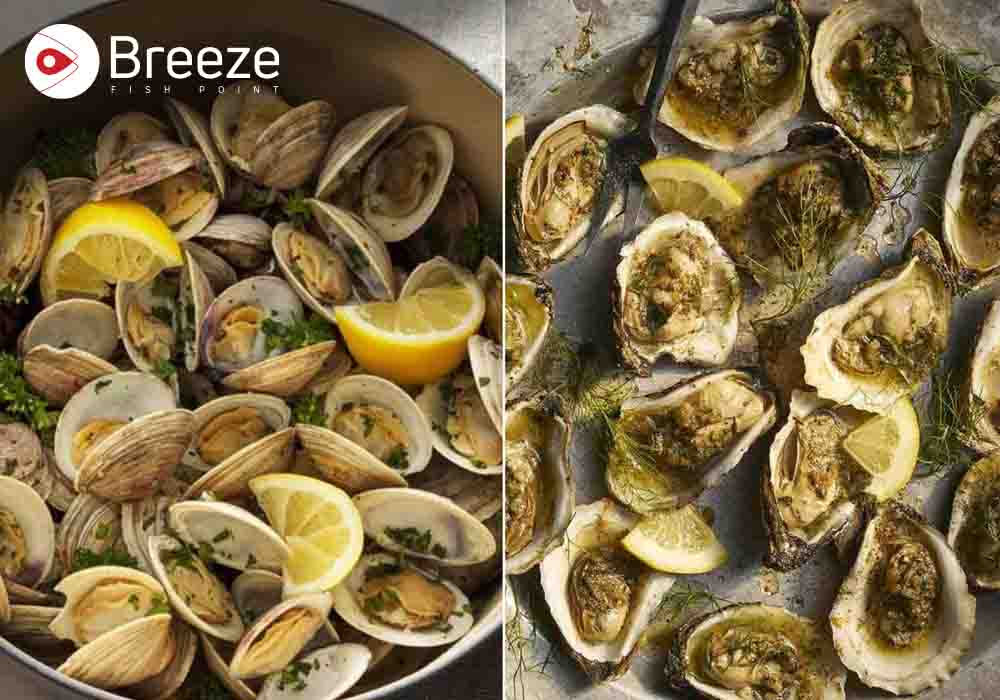
Clams and oysters might both be bivalve mollusks, but they’re as different as night and day. Clams bury themselves in sand or mud, using a muscular foot to dig, while oysters cling to rocks or reefs in saltwater. Clams have smooth, oval shells that close tightly, while oyster shells are rough, irregular, and often stay slightly open. Taste-wise, clams are chewier with a briny, slightly sweet flavor, while oysters are tender, sometimes buttery, with a stronger saline kick. Clams are super versatile—think chowders, pastas, or raw on the half-shell—while oysters are often savored raw or lightly cooked, like in oysters Rockefeller.
Swapping them? Not ideal, as their textures and flavors demand different treatments.
- Habitat: Clams love sand or mud; oysters prefer rocky surfaces.
- Shell: Clams have smooth, tight shells; oysters have rough, bumpy ones.
- Taste: Clams are chewy and briny; oysters are tender and salty-sweet.
- Cooking: Clams shine in hearty dishes; oysters are raw-bar stars.
Which Clam Varieties Should You Know About?
With over 15,000 clam species, only a handful make it to your plate. Here’s a rundown of the most popular ones in the U.S., each with a unique vibe and culinary use:
- Littleneck Clams (Mercenaria mercenaria): Small, sweet, and tender, these are perfect for raw bars or steaming with garlic and white wine.
- Cherrystone Clams (Mercenaria mercenaria): Slightly larger, they’re great for grilling or stuffing in dishes like clams casino.
- Soft-Shell Clams (Mya arenaria): Also called steamers, these have brittle shells and a sweet, salty flavor, ideal for steaming or frying.
- Razor Clams (Siliqua patula for Pacific, Ensis directus for Atlantic): Long and lean, they’re sweet and chewy, perfect for frying or grilling.
- Manila Clams (Venerupis philippinarum): Small and sweet, these Pacific natives are steamed in Asian-inspired dishes.
- Quahogs (Mercenaria mercenaria): Large and tough, they’re chopped up for chowders or stuffies.
- Surf Clams (Spisula solidissima): Often processed into clam strips or used in canned chowder.
- Geoducks (Panopea generosa): Massive and phallic, these are prized for their crisp texture in sashimi or stir-fries.
- Chocolata Clams (Megapitaria squalida): Rich and briny, they’re a Mexican delicacy, often eaten raw or grilled.
What Are Soft-Shell Clams and Why Are They Unique?
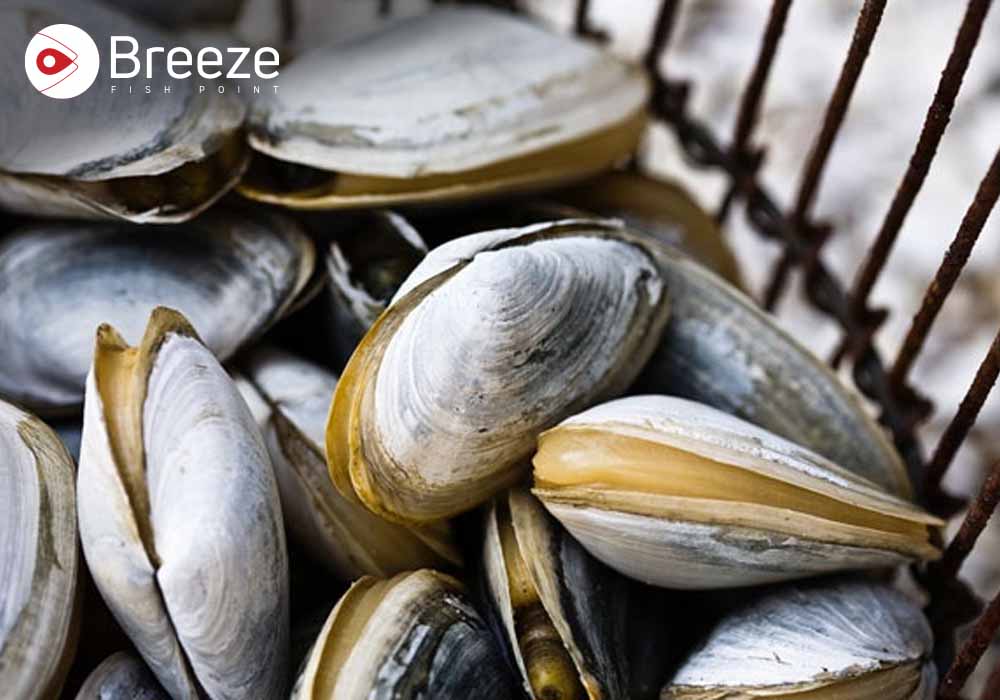
Soft-shell clams, or steamers (Mya arenaria), are the rebels of the clam world. Their brittle, oval shells don’t close completely, thanks to long siphons that filter water deep in the sand. Found on both coasts, they’re a New England staple, often steamed and dipped in butter or broth to rinse off grit. Their sweet, salty flavor and tender texture make them a summer favorite, especially in clam bakes. Cleaning is key—purge them in salted water with cornmeal to spit out sand.
- Texture: Soft and delicate, less chewy than hard-shell clams.
- Flavor: Sweet with a salty ocean kick.
- Prep Tip: Soak in salted water for 20–30 minutes to remove grit.
What’s the Deal with Sea Clams?
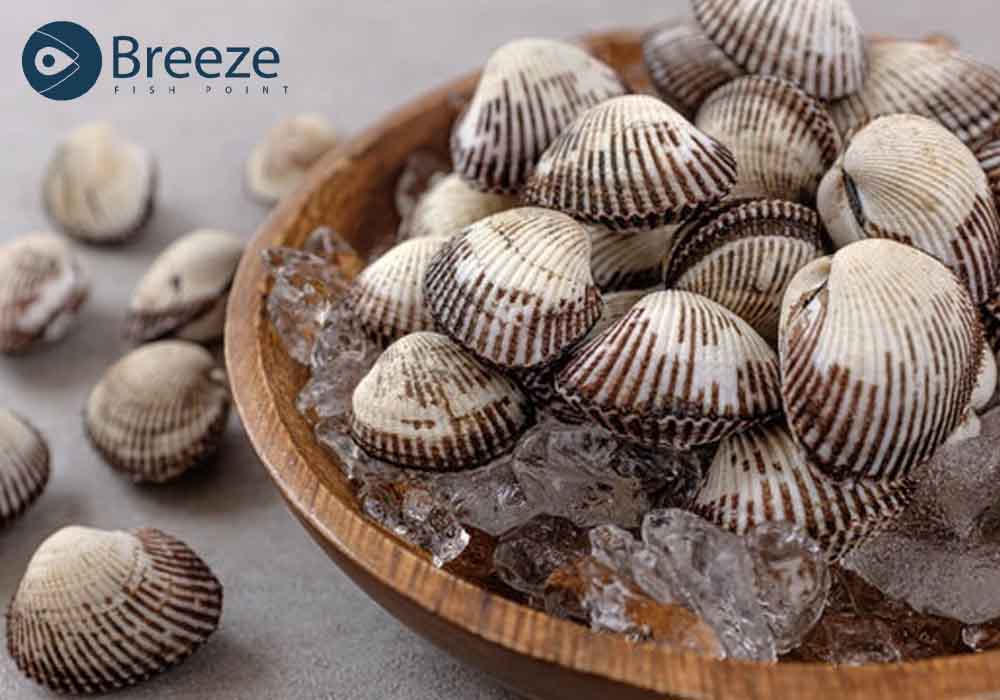
Sea clams, aka surf clams (Spisula solidissima), live underwater even at low tide, from Maine to Delaware. Their white, hard shells house tougher meat, making them less popular for steaming but perfect for clam strips or canned chowder. They’re often harvested by trawlers and can grow up to 8 inches. If you find one while swimming, tenderize the meat with a mallet or marinate in lemon juice for a pie or chowder. They’re also great as fishing bait for flounder or eels.
- Best Use: Fried as strips or minced for chowder.
- Challenge: Tough texture requires tenderizing.
- Fun Fact: Often used in chain restaurant chowders for cost savings.
Is There Such a Thing as a Sea Moose Clam?
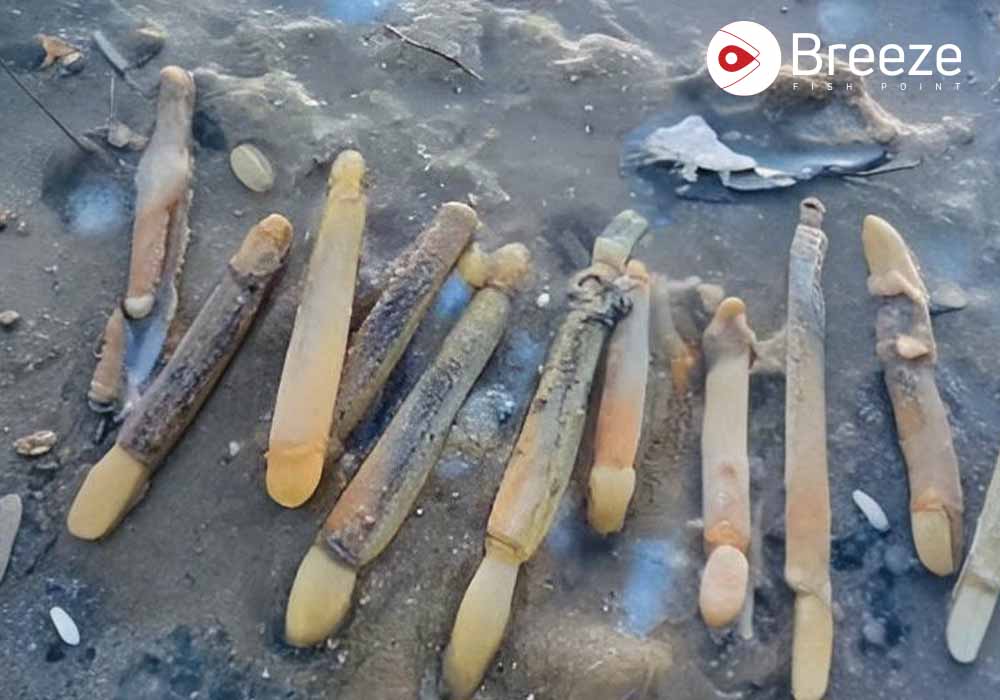
The term “sea moose clam” is a bit of a mystery—there’s no officially recognized species by this name. It might be a playful misnomer for geoducks (Panopea generosa), whose long, phallic siphons could jokingly resemble a moose’s snout. Geoducks are the largest clams, native to the Pacific Northwest, with a sweet, crunchy texture prized in sushi or hot pots. If “sea moose” refers to something else local, let me know your region, and I’ll dig deeper!
- Likely Candidate: Geoduck, with its unique look and size.
- Taste: Crisp and mildly sweet, great raw or lightly cooked.
How Can You Cook Littleneck Clams for Maximum Flavor?
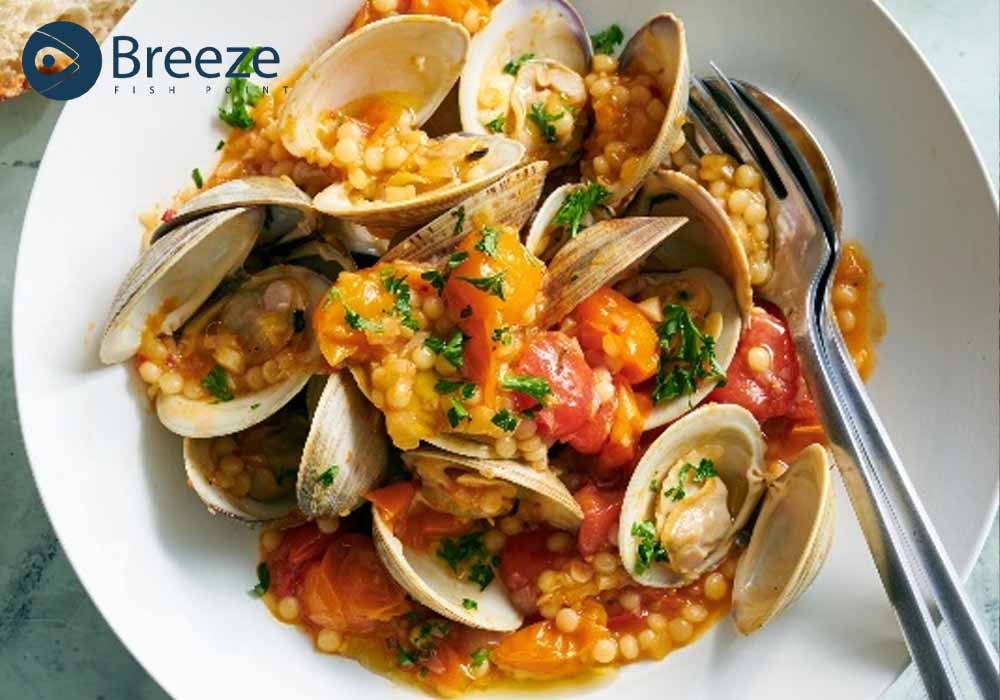
Littleneck clams (Mercenaria mercenaria) are the darlings of the raw bar, but they shine when steamed. Here’s a simple, crowd-pleasing recipe for steamed littleneck clams:
Littleneck Clam Recipe (Serves 4)
- Ingredients: 2 lbs littleneck clams, 3 tbsp olive oil, 4 garlic cloves (minced), 1 cup dry white wine, 1/2 cup clam juice, 2 tbsp butter, fresh parsley, lemon wedges.
- Instructions:
- Rinse clams under cold water, scrubbing shells. Soak in salted water for 20 minutes to purge grit.
- Heat olive oil in a large pot over medium heat. Add garlic and sauté until fragrant (1–2 minutes).
- Pour in wine and clam juice, bring to a simmer. Add clams, cover, and steam for 5–7 minutes until shells open.
- Stir in butter and parsley. Serve with lemon wedges and crusty bread for dipping.
- Tip: Discard any clams that don’t open after cooking.
- Flavor Boost: Add red pepper flakes for a spicy kick.
- Pairing: Serve with a crisp Sauvignon Blanc.
Why Are Cherrystone Clams a Chef’s Favorite?

Cherrystone clams (Mercenaria mercenaria), named after Virginia’s Cherrystone Creek, are larger than littlenecks but still tender enough for raw or grilled dishes. Their meaty texture makes them perfect for clams casino or stuffed clams. At 2–3 inches wide, they’re versatile for baking, grilling, or chopping into chowder. Their briny, firm flesh holds up well to bold flavors like bacon or garlic.
- Best Dishes: Clams casino, stuffed clams, or grilled with herb butter.
- Prep Tip: Shuck carefully; their shells are thicker than soft-shells.
What Makes Razor Clams Stand Out?
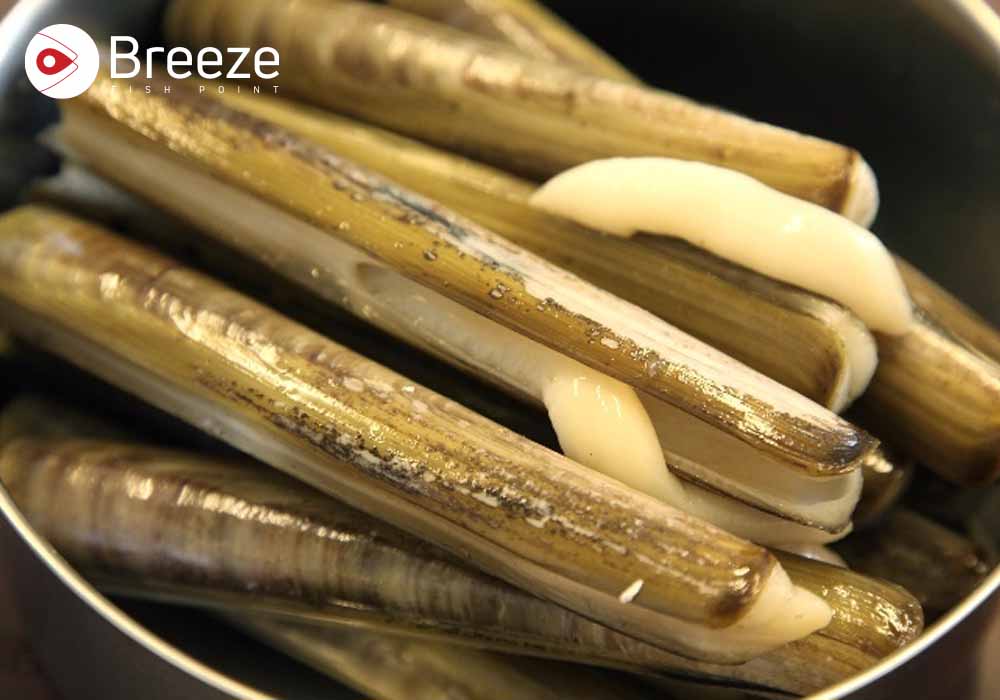
Razor clams, like Pacific (Siliqua patula) or Atlantic jackknife (Ensis directus), are long, slender, and named for their resemblance to an old-school straight razor. Their sweet, chewy meat is a delicacy, especially when fried or grilled. Pacific razors have thicker shells and vibrant purple-yellow hues, while Atlantic ones are more delicate. Clean them thoroughly to avoid grit, and try them in ceviche or sautéed with garlic and parsley.
- Texture: Meaty neck, chewy center, soft tips.
- Best Use: Fried, grilled, or in seafood stews.
How Do Clams and Mussels Compare?
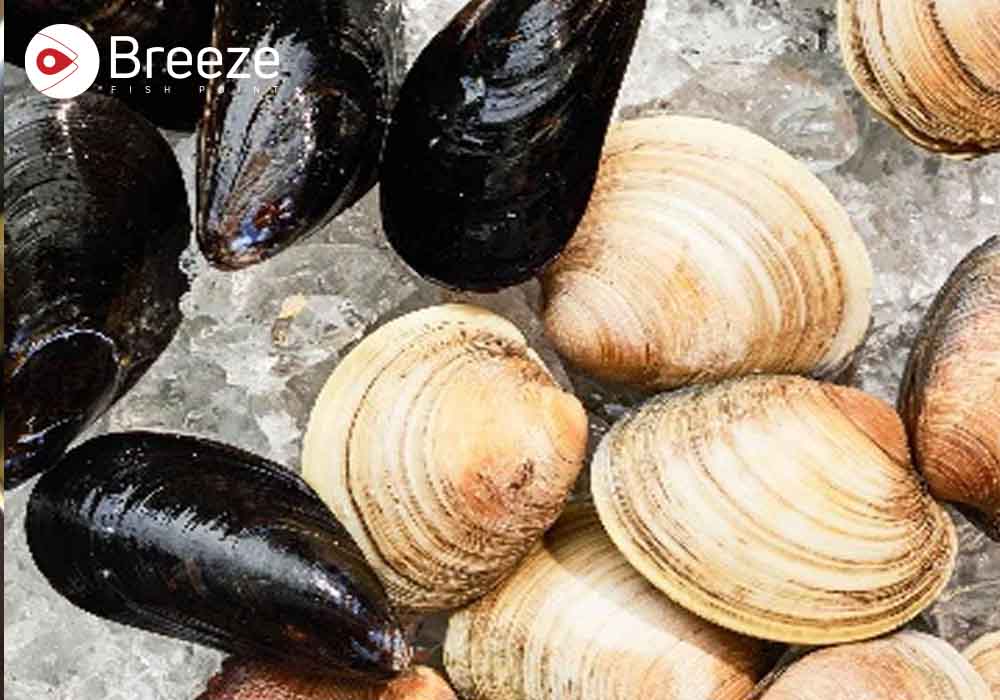
Clams and mussels are bivalve cousins, but they differ in key ways. Clams burrow in sand or mud, while mussels cling to rocks in clusters. Clam shells are rounder and smoother; mussel shells are elongated and darker. Clams are chewier with a briny flavor, while mussels are creamier and sweeter. Both are great steamed, but clams are more versatile in chowders or raw dishes, while mussels shine in broths like moules marinières. Swapping them in recipes? Only in casual stews, as their textures vary.
- Flavor: Clams are brinier; mussels are sweeter.
- Cooking Time: Mussels cook faster; clams need a few extra minutes.
Are Littleneck Clams a Nutritional Powerhouse?
Littleneck clams are a lean, nutrient-dense choice. A 3-ounce serving packs about 22 grams of protein, low fat, and key nutrients like:
- Vitamin B12: Supports nerve function and blood health.
- Iron: Boosts red blood cell production.
- Omega-3s: Promotes heart health.
- Zinc: Enhances immune function.
They’re low in calories, making them ideal for healthy diets. However, raw clams carry a risk of bacteria, so ensure they’re fresh and sourced responsibly.
How Do You Prepare Whole Clams for Frying?
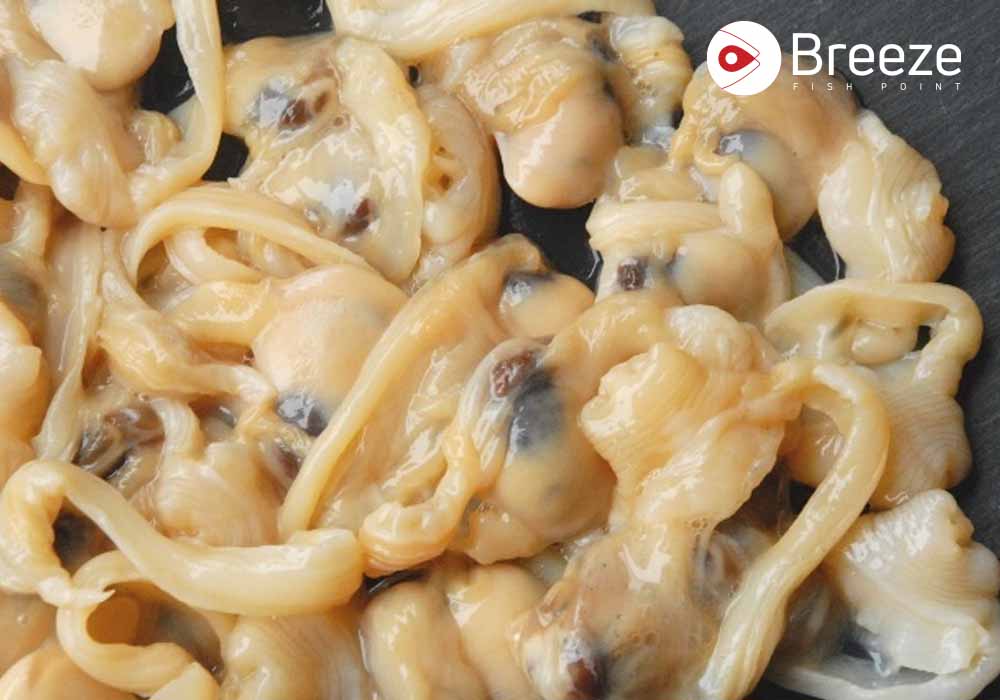
Whole clams, like soft-shell or razor clams, make killer fried treats. Here’s how to nail it:
- Choose: Soft-shell or razor clams for tender meat.
- Clean: Rinse under cold water, soak in salted water with cornmeal to purge grit.
- Prep: Shuck clams, remove the stomach if desired, and pat dry.
- Batter: Dredge in flour, dip in egg wash, then coat with breadcrumbs or cornmeal.
- Fry: Heat oil to 350°F and fry for 2–3 minutes until golden.
- Serve: Pair with tartar sauce or lemon wedges.
What Are Chocolate Clams and Why Are They Special?
Chocolate clams (Megapitaria squalida), found along Mexico’s Pacific coast, get their name from their rich, dark brown shells. Their briny, robust flavor makes them a favorite for raw dishes or grilling with lime and chili. They’re meaty and slightly chewy, perfect for ceviche or tacos. Sustainably sourced, they’re a delicacy in Baja cuisine, often paired with bold spices.
- Flavor: Rich, oceanic, with a hint of sweetness.
- Best Use: Raw with hot sauce or grilled with garlic.
Clam Q&A: Your Burning Questions Answered
What do clams taste like?
Can you eat raw clams?
What are steamer clams?
How do you cook steamed clams?
Is a scallop a clam?
To Be Continued: What’s Next?
Clams are just the start of the seafood adventure! Stay tuned for our next blog, where we’ll dive into the world of mussels—how to cook them, their nutritional perks, and why they’re a sustainable superstar. Want more?
Drop your favorite clam recipes or questions below, and let’s keep the seafood love flowing!
To Be Continued: What’s Next?
Clams are just the start of the seafood adventure! Stay tuned for our next blog, where we’ll dive into the world of mussels—how to cook them, their nutritional perks, and why they’re a sustainable superstar. Want more?
Drop your favorite clam recipes or questions below, and let’s keep the seafood love flowing!




